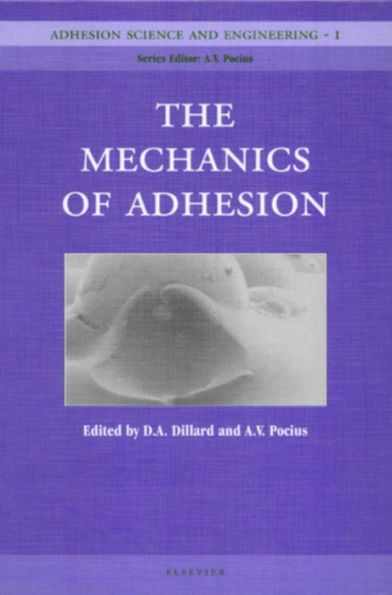Adhesion Science and Engineering: Surfaces, Chemistry and Applications
The Mechanics of Adhesion shows that adhesion science and technology is inherently an interdisciplinary field, requiring fundamental understanding of mechanics, surfaces, and materials. This volume comprises 19 chapters. Starting with a background and introduction to stress transfer principles; fracture mechanics and singularities; and an energy approach to debonding, the volume continues with analysis of structural lap and butt joint configurations. It then continues with discussions of test methods for strength and constitutive properties; fracture; peel; coatings, the case of adhesion to a single substrate; elastomeric adhesives such as sealants. The role of mechanics in determining the locus of failure in bonded joints is discussed, followed by a chapter on rheology relevant to adhesives and sealants. Pressure sensitive adhesive performance; the principles of tack and tack measurements; and contact mechanics relevant to wetting and surface energy measurements are then covered. The volume concludes with sections on fibermatrix bonding and reinforcement; durability considerations for adhesive bonds; ultrasonic non-destructive evaluation of adhesive bonds; and design of adhesive bonds from a strength perspective. This book will be of interest to practitioners in the fields of engineering and to those with an interest in adhesion science.
1111447588
Adhesion Science and Engineering: Surfaces, Chemistry and Applications
The Mechanics of Adhesion shows that adhesion science and technology is inherently an interdisciplinary field, requiring fundamental understanding of mechanics, surfaces, and materials. This volume comprises 19 chapters. Starting with a background and introduction to stress transfer principles; fracture mechanics and singularities; and an energy approach to debonding, the volume continues with analysis of structural lap and butt joint configurations. It then continues with discussions of test methods for strength and constitutive properties; fracture; peel; coatings, the case of adhesion to a single substrate; elastomeric adhesives such as sealants. The role of mechanics in determining the locus of failure in bonded joints is discussed, followed by a chapter on rheology relevant to adhesives and sealants. Pressure sensitive adhesive performance; the principles of tack and tack measurements; and contact mechanics relevant to wetting and surface energy measurements are then covered. The volume concludes with sections on fibermatrix bonding and reinforcement; durability considerations for adhesive bonds; ultrasonic non-destructive evaluation of adhesive bonds; and design of adhesive bonds from a strength perspective. This book will be of interest to practitioners in the fields of engineering and to those with an interest in adhesion science.
607.99
In Stock
5
1

Adhesion Science and Engineering: Surfaces, Chemistry and Applications
2014
Adhesion Science and Engineering: Surfaces, Chemistry and Applications
2014
607.99
In Stock

Product Details
| ISBN-13: | 9780080525983 |
|---|---|
| Publisher: | Elsevier Science |
| Publication date: | 11/14/2002 |
| Series: | Annals of Discrete Mathematics |
| Sold by: | Barnes & Noble |
| Format: | eBook |
| Pages: | 2014 |
| File size: | 38 MB |
| Note: | This product may take a few minutes to download. |
About the Author
From the B&N Reads Blog
